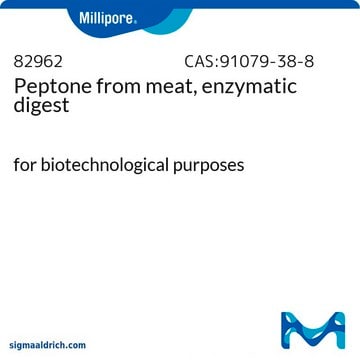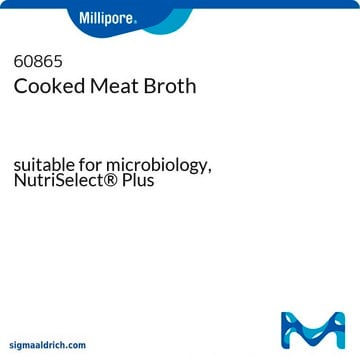Recommended Products
biological source
Porcine pancreas
bovine heart (
)
Quality Level
Agency
USP
sterility
non-sterile
form
powder
composition
amino-nitrogen, 3.5-4.5%
total nitrogen (N), 11.5-12.5%
concentration
≤7% Cl- (as NaCl)
impurities
coagulable protein, none detected
ign. residue
≤18%
loss
≤6% loss on drying
pH
6.0-7.0 (2% in H2O)
solubility
H2O: 2%, clear, yellow to brown
application(s)
food and beverages
microbiology
General description
Application
Storage Class Code
11 - Combustible Solids
WGK
WGK 3
Flash Point(F)
Not applicable
Flash Point(C)
Not applicable
Personal Protective Equipment
Choose from one of the most recent versions:
Already Own This Product?
Find documentation for the products that you have recently purchased in the Document Library.
Customers Also Viewed
Articles
Culture media provides a habitat with suitable nutrients, energy sources, and certain environmental conditions for the growth of microorganisms. The components of the culture media range from simple sugars to peptones, salts, antibiotics, and complex indicators.
Our team of scientists has experience in all areas of research including Life Science, Material Science, Chemical Synthesis, Chromatography, Analytical and many others.
Contact Technical Service













